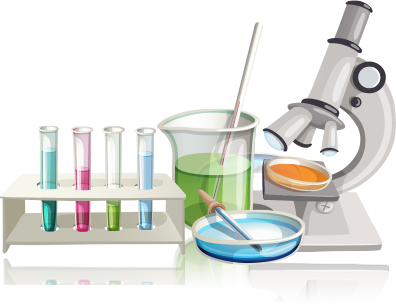Sometimes artists make their own materials to create a work of art that is unique to them. Creating the right material requires a lot of experimentation until the result is exactly what the artist needs. In the activity below, you can make a colorful art material that looks bright in the light!
Here's what to do:
- Place 2 tablespoons of Elmer's glue in a small cup and add 2 teaspoons of water. Stir with a popsicle stick until the glue and water are thoroughly mixed.
- Pour the glue and water mixture into a lid until the bottom is covered. Be careful not to add too much if you are using a lid.
- Add 4-5 drops of food coloring to different areas of the glue mixture.
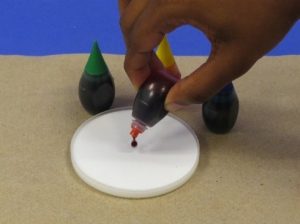
- In a clean, small cup, add a small amount of liquid dish detergent.
- Dip a toothpick into the detergent and touch the center of a food-coloring drop and quickly remove the toothpick. Be careful not to stir. Observe how the food coloring moves in the glue.
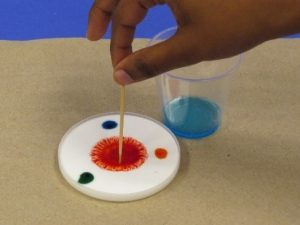
- Dip the toothpick back into the detergent and touch a different food-coloring drop. Repeat this until the colors have spread throughout the glue.
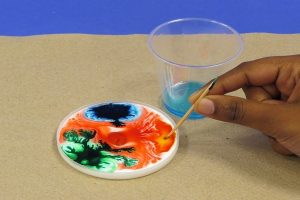
- To complete your stained “glass” design, leave the lid with your designs to dry overnight.
- When the glue is dry, carefully peel your stained glass glue out of the lid and hold it up to the light!
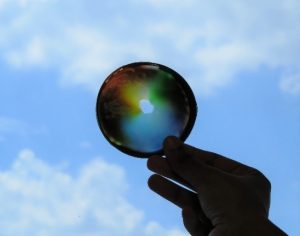
What to expect
When the food coloring is added to the glue and water mixture, the drop of color tends to remain in the same area. The first time you touch the food coloring with detergent, the color should move in a branching pattern. As you continue to touch different food coloring drops with detergent, the food coloring will continue to move and create colorful designs.
What's happening in there?
Elmer's glue has water in it plus a much longer, more flexible chemical compound called polyvinyl acetate. These long flexible molecules are moving around in the water like intertwined strands of boiled spaghetti. When the food coloring drops are added, they are prevented from spreading out much by the combination of water and polyvinyl acetate molecules.
When the detergent is added, detergent molecules interact with the coloring and the glue-water mixture. The detergent molecules spread out and move the coloring with them. The branching pattern of the moving color may have something to do with the interaction of the detergent with the different components of the glue-water mixture.
What else could you try?
Detergent makes food coloring move in glue, but you should see the way alcohol makes food coloring move in water! Let’s try it!
What you'll need:
- Small paper plate
- Water
- Food coloring (blue and yellow)
- Cotton swabs
- Isopropyl alcohol (70%)
- Small plastic cup
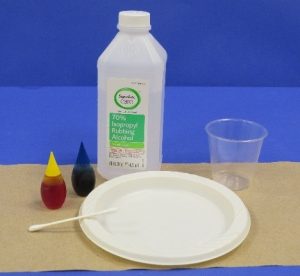
Be safe
Be sure to review the safety instructions on page 1 before proceeding.
Here's what to do:
- Add enough water to a paper plate to cover the bottom of the plate.
- Add 1 drop of blue food coloring near the center of the plate. Add 1 drop of yellow food coloring next to the drop of blue food coloring but not touching it. The drops will sink to the bottom of the plate.
- Pour a small amount of rubbing alcohol into a cup.
- Dip one end of a cotton swab in the alcohol, and then place it in between the drops of food coloring. Leave the cotton swab submerged in the water and watch what happens.
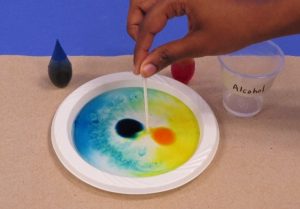
What to expect
The blue and yellow food coloring will move quickly off the bottom and flow upward and mix.
What's happening in there?
Alcohol molecules interact with water molecules in a unique way when they are mixed. The movement caused by the mixing causes the food coloring to move and mix.
